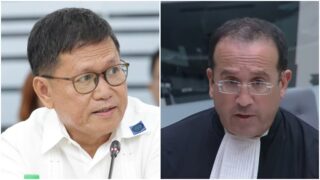“When do you draw the line?”
This question arises when discussing respect for opposing beliefs, particularly in the context of religion. Is your belief inherently superior to those of others? Should their beliefs be changed to align with modern times?
The topic has sparked intense debate on social media, especially after a viral video emerged of a drag performer named Pura Luka Vega who impersonated Jesus Christ, while the crowd sang the Lord’s Prayer. The impersonation amid the singing of a religious song provoked strong reactions from both devout and nominal Catholics.
But did Pura Luka Vega really cross the line?
First and foremost, it’s important to acknowledge that opinions can vary greatly. Second, we should carefully consider the context before determining where the line is drawn. And finally, there is always a dominant discourse on each side of the argument.
In the history of drag, performance has always been a political statement intertwined with art. While some may perceive it purely as entertainment, what has often been overlooked is the rich history of activism within the drag community. The Stonewall Riots of 1969 marked a significant turning point in the LGBTQ+ rights movement, challenging discrimination and harassment.
This epistemic history of drag’s political statement has reached the Philippines, where LGBTQ+ individuals face significant criticism and marginalization, particularly from the Church. The Church’s prevailing stance often perpetuates discrimination against LGBTQ+ individuals. Its influence extends to politics, where politicians reject same-sex marriage due to the majority of them being Christians, further marginalizing the LGBTQ+ community.
In the dominant discourse, did Pura Luka Vega cross the line by imitating Jesus’ appearance? For the devout and the conservative majority, the answer is yes. However, personally, if Pura Luka Vega’s intention was to draw attention and protest against the church, I would not be offended. Such a radical approach aims to draw notice and shed light on important issues. It serves as a prime example of art’s purpose—offering insight into the human condition.
However, it’s crucial to consider that the context of the drag party is not inherently political. It primarily aims to entertain the gathered community. The platform chosen for the performance was unorthodox, thereby undermining the intended political statement. Additionally, a legitimate political statement should incorporate a narrative concept, which Pura seemed to lack. Moreover, the inappropriate singing of the Lord’s Prayer raises concerns. While singing the song itself is acceptable, it should align with its intended purpose and appropriate setting. The Lord’s Prayer is often used in doxology for worship, and not intended to be used as mockery.
Although I disagree with Pura’s actions and believe he crossed the line, this event serves as a wake up call for the Catholic Church and politicians to listen to the LGBTQ+ community, acknowledge their rights, address the root causes of discrimination, and support the Sogie bill. For the LGBTQ+ community, we must accept the paradox that extreme liberation sometimes necessitates pushing boundaries. However, it is essential to recognize limits and not disrespect the beliefs of others.
Sensei M. Adorador, member, Congress of Teachers and Educators for Nationalism and Democracy


